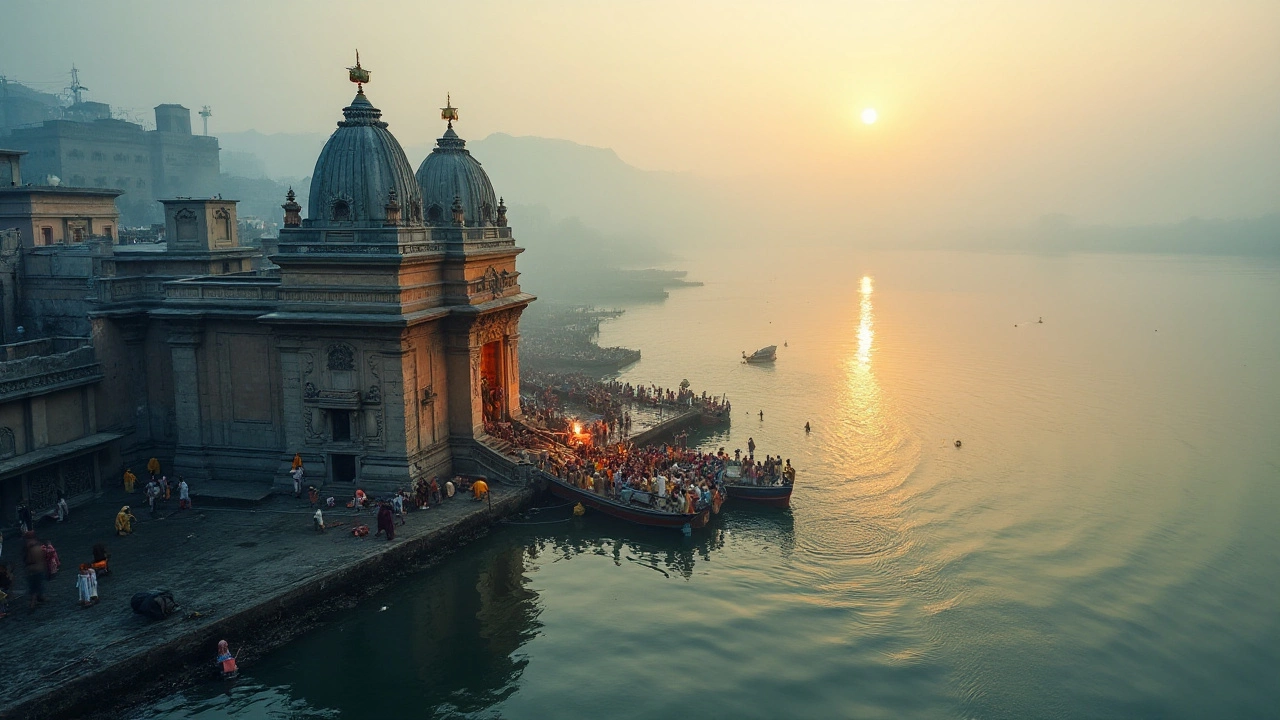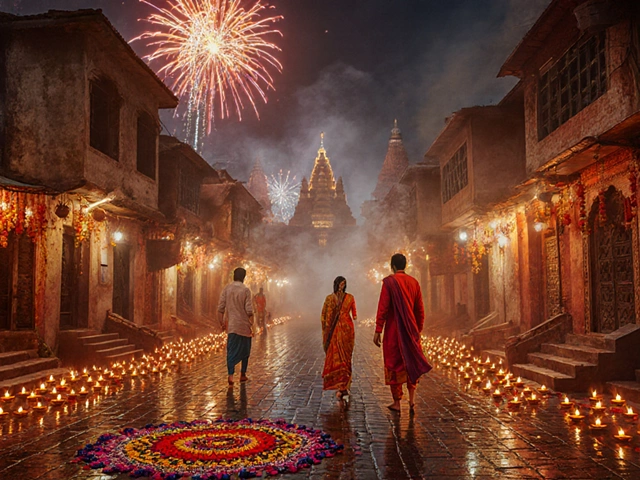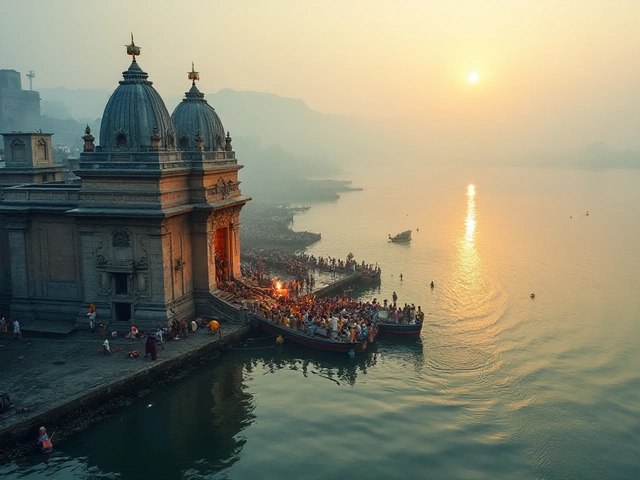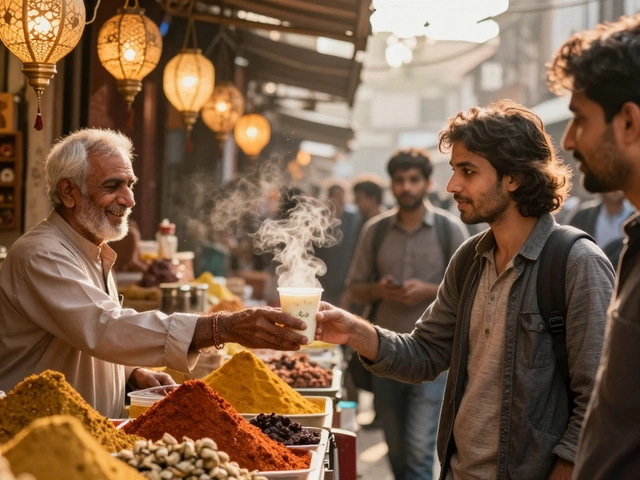India stands as a beacon of spirituality, drawing seekers from across the globe to its sacred grounds. It is home to countless Hindu temples, each with its own unique aura and divinity. These temples aren't just architectural marvels; they're deeply embedded in the hearts and souls of many who walk through their ancient halls.
The vibes of these holy sites are unmatched, offering a mix of history, culture, and spiritual fervor. People often ask which temple holds the highest sanctity among them. The answer isn't straightforward, as it hinges on faith, tradition, and personal journeys. This exploration offers insights into some of the most revered temples, guiding those who wish to embark on a pilgrimage and delve into the spiritual heritage of India.
- The Essence of Holiness in Hindu Temples
- Varanasi's Kashi Vishwanath Temple
- Tamil Nadu's Meenakshi Amman Temple
- Pilgrimage Tips for Spiritual Seekers
- Cultural Significance and Practices
The Essence of Holiness in Hindu Temples
Hindu temples are much more than structures of stone and art; they are sanctuaries of spiritual energy, rich culture, and timeless tradition. The holiness attributed to these Hindu temple structures is engrained in their ability to serve as a bridge between the divine and mortals, offering a space where individuals can seek solace, redemption, or blessings. Each temple is a microcosm of the universe, embodying cosmic principles and metaphysical truths in its design, rituals, and spiritual practices. This unique blend of spirituality and artistic grandiosity is what beckons millions of pilgrims and curious tourists alike from all corners of the globe.
The architecture of Indian temples is a testimony to the rich cultural heritage of the region, radiating sanctity in its every curve and corner. The deities housed within these sacred spaces are believed to be living entities, pulsating with divine presence. The daily rituals and seasonal festivities conducted within walls resonate with an ancient rhythm, drawing on an unbroken lineage of Vedic traditions passed down through centuries. In many ways, the essence of a temple's holiness is deeply tied to its ability to host these sacred rituals, offering a tangible experience of the gods' presence to all who enter.
The surroundings of each temple also contribute significantly to its perceived holiness. Often situated in picturesque locales—from the serene bank of the Ganges to the verdant hills of Tamil Nadu—the location itself is considered an integral part of the sacred experience. This connection to nature imbues the atmosphere with a serene sanctity, allowing visitors to sense a profound unity with the universe. Vedic texts emphasize this harmony with nature, stating that
"In the stillness of natural beauty, one finds the whispers of the divine."
The essence of these holy sites extends into the communal and social aspects of temple life. Temples serve as hubs of community interaction and spiritual communion, where people from various backgrounds congregate for prayer, festivals, and learning. Here, spiritual seekers find a sense of belonging, learning from the wisdom of priests and the ancient texts. This communal spirit reinforces the temple's role as a cornerstone of spiritual life, offering guidance and support to those on their spiritual journeys. It is not unusual for devotees to travel long distances to partake in temple festivals, seeking both personal enlightenment and a deeper connection with the divine, thus amplifying the temple's aura of holiness.
Ultimately, the holiness of a sacred site in Hindu belief is a multi-faceted concept, deeply tied to personal spirituality, community values, and the enduring traditions that sustain these magnificent edifices. As travelers continue their temple tours across India, they find that the true essence of holiness in these temples is not just in the grand ceremonies or the ancient architecture, but in the quiet, intimate moments of connection that each individual experiences within these sacred walls, often leaving them profoundly transformed.
Varanasi's Kashi Vishwanath Temple
As one of the most revered spiritual spots on Earth, Varanasi's Kashi Vishwanath Temple occupies a central place in Hindu mythology and belief. Nestled on the western bank of the holy Ganges, the temple holds an aura of mysticism and intense devotion. The city of Varanasi itself, often referred to as the oldest living city in the world, pulsates with spiritual life and activity. It is said that a visit to the Kashi Vishwanath temple brings one closer to moksha, the ultimate liberation from the cycle of life and death. The temple is dedicated to Lord Shiva, one of the principal deities in Hinduism, who is worshipped here in the form of a linga. Kashi Vishwanath, meaning 'lord of the universe,' is a powerful symbol of faith and devotion.
The current temple structure was rebuilt in 1780 by Maharani Ahilyabai Holkar after it was destroyed multiple times by invaders. Before that, it stood as a beacon of architectural and spiritual grandeur for many centuries. Today, the temple complex is a blend of profound spiritual history and architectural beauty, with a golden spire and domes that mesmerize a million ardent devotees and tourists alike each year. The temple complex comprises several small shrines and the main temple area, where one can witness devotees offering prayers and chants echoing through the magnificent corridors. It's essential to note that the temple observes strict rules for entry, and only Hindus are allowed inside the main sanctum, while others can view it from designated areas.
The fervor of rituals at this spiritual sanctuary is truly captivating. Each day the temple hosts various ceremonies, with the Ganga aarti being among the most splendid. This ritual involves chants, bells, and lamps offered to the river in dedication to the divine. It's an experience that stirs the soul and profoundly impacts those who witness it. The bustling streets leading to the temple are dotted with shops selling flowers, incense, and other offerings, adding to the vibrant atmosphere of the pilgrimage. Pilgrims often regard the journey to Kashi Vishwanath as one of profound significance, filled with faith, tradition, and personal transformation.
"The Kashi Vishwanath Temple stands not just as a place of worship but as a living testament to the resilience of faith and devotion," renowned historian Ranajit Guha once reflected.
A visit to Varanasi and the Kashi Vishwanath Temple is more than just a religious pilgrimage; it's an immersion into the heart of India's spiritual essence. It's not uncommon to find people from various walks of life gathering here, seeking blessings, spiritual awakening, or simply the joy of being in such a sacred space. As the devotees pour in from all corners of the world, the temple serves as a melting pot of cultures united in devotion. The Kashi Vishwanath Temple continues to draw both pilgrims and tourists, each with their unique reasons for visiting, yet leaving with a sense of peace and profound connection to the divine.
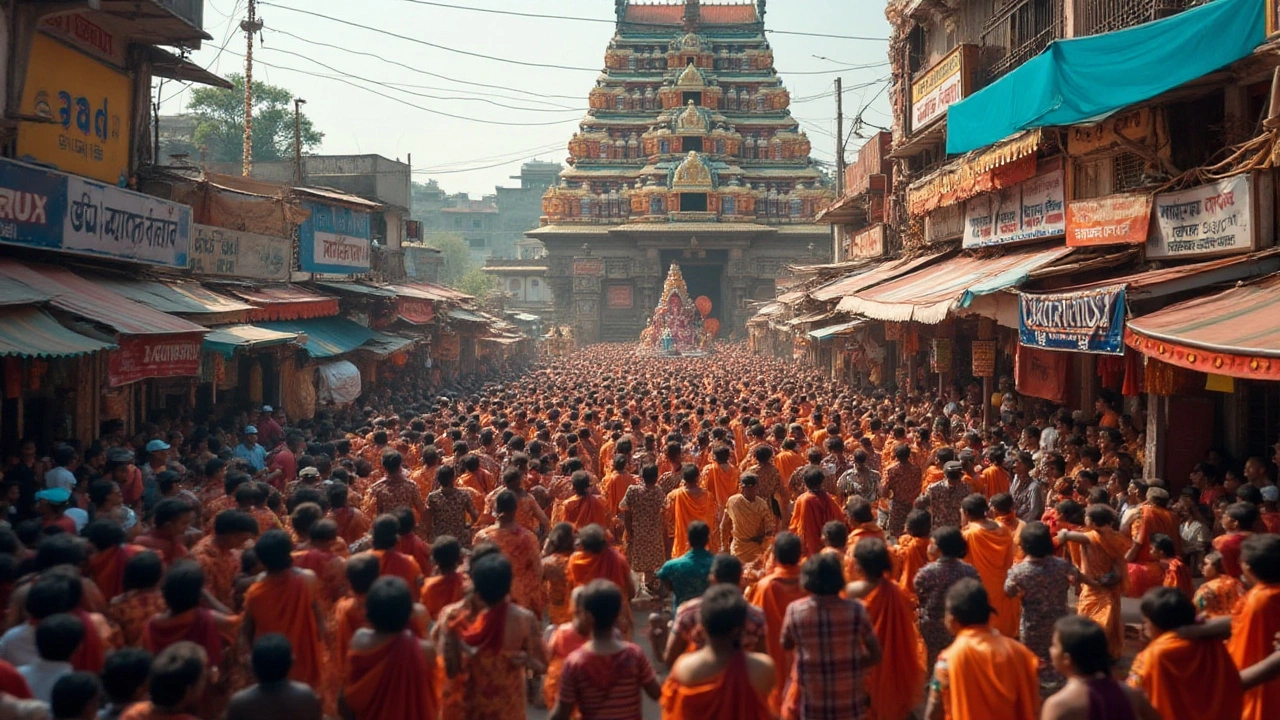
Tamil Nadu's Meenakshi Amman Temple
Tucked away in the vibrant city of Madurai, Tamil Nadu, the Meenakshi Amman Temple stands as a vivid testament to the architectural and spiritual legacy of Hindu culture. Dating back to the 6th century, this vast temple complex is dedicated to the goddess Meenakshi, a form of Parvati, and her consort, Lord Sundareswarar, a form of Shiva. The legend behind this temple is as colorful as its towering gopurams, suggesting that Goddess Meenakshi was born with three breasts, destined to lose one upon meeting her future husband, unfolding her divine destiny. A walk through Meenakshi Amman's corridors transports visitors to a different realm, where history, mythology, and art unite in a harmonious dance.
Visitors are often awestruck by the temple's elaborately carved columns and statues, depicting gods, goddesses, and mythical creatures in exquisite detail. It features 14 gateway towers known as gopurams, the tallest of which rises over 170 feet and is adorned with intricate colorful carvings that are nothing short of breathtaking. The temple complex covers 15 acres, making it one of the largest such facilities in India. Within its sacred halls, pilgrims engage in rituals that have been performed for centuries, creating an atmosphere charged with devotion and spirituality. The sacred sites within this temple are a tribute to both the enduring nature of faith and the splendid artistry of long-gone eras.
One of the remarkable aspects of the Meenakshi Amman Temple is its annual festival, Meenakshi Tirukalyanam, which celebrates the divine marriage of Meenakshi and Sundareswarar. This festival attracts hundreds of thousands of pilgrims and travelers who participate in a grand procession, witnessing scenes of devotion and joy. The temple isn't just a place of worship; it's a thriving community center intertwined with the everyday life of Madurai's habitants. Besides being a spiritual haven, the temple serves as a focal point for cultural exchange, where visitors, both orthodox and new-age seekers, share their experiences.
"The Meenakshi Temple symbolizes the creative synthesis of humanity's spirituality with artistic excellence," remarked historian John Guy. "It's a place where the past logic of spirituality meets the future's innovative expression."
For travelers wishing to experience the temple's sanctity, a few tips come in handy. Dress modestly as a sign of respect, cover your head if required, and be prepared for a fragrant but sometimes overwhelming mix of incense and flower offerings. Photography is restricted in certain areas, aiming to protect the sacredness of this spiritual journey. Early morning or late afternoon visits are ideal, allowing one to bypass the bustling midday crowds. In this revered site, the echoing chants and serenity soak deeply into one's consciousness, leaving a lasting imprint of calm and devotion.
Pilgrimage Tips for Spiritual Seekers
Embarking on a pilgrimage to India's most sacred Hindu temples can be a transformative experience. These journeys require more than just packing your bags; they call for a mindset open to the spiritual and cultural tapestry that each temple offers. To make the most of your spiritual endeavor, plan meticulously, focusing on both spiritual and practical aspects. The first step is to research extensively about the cultural norms and rituals of each temple. Understanding the beliefs and practices will enhance your visit, allowing you to connect more deeply with the sacred essence of these revered sites.
As you prepare for your journey, consider the timing of your visit. Many temples host festivals and special events that attract numerous devotees. While these events can be colorful and vibrant, they can also be crowded. Therefore, determining whether you seek the energy of festival fervor or the tranquility of quieter times is crucial. The climate is another factor to consider, as India's vast landscapes offer diverse weather patterns, affecting accessibility and your overall experience. Being thoughtful about the season and timing ensures that you can engage with the spiritual atmosphere in a manner that resonates with you.
Another key consideration is respecting the local customs and attire. Many temples require modest clothing, which often means covering shoulders and knees. Carry a light shawl or scarf, as it can be useful for both modesty and comfort in varying temperatures. Footwear policies are also important, as most temples require you to remove your shoes before entering. Consider bringing a bag to carry your shoes safely or wearing easy-to-remove sandals to make this process smoother. The act of removing shoes is steeped in symbolic meaning, serving as a gesture of humility and respect as you step onto sacred ground.
Practical logistics like accommodation and transportation should not be overlooked either. Staying close to the temple can offer convenience and allow more flexibility for early morning or late night visits when the temples are less crowded. Consider booking accommodations with other pilgrims, as this can be a way to share stories and gain insights from fellow travelers. Public transport, ride-share services, or even hiring a local guide familiar with the area can enhance your journey by ensuring safe and efficient travel between temples. Reaching out to locals can also offer a deeper understanding of the social and cultural nuances surrounding each site.
"The spiritual journey is the unlearning of fear and prejudices and the acceptance of love back in our hearts." – Marianne Williamson
As you journey through these sacred lands, maintain a respectful and open heart. Immerse yourself in the rituals and chants, allowing the vibrations to guide your inward reflection. Carry a journal to jot down your thoughts and experiences, as these temples often bring personal revelations and moments of introspection. Embrace the diverse tapestry of devotees you'll encounter, each with their own stories and reasons for being there, contributing to the temple's vibrant community. Remember that the essence of your pilgrimage centers on spiritual growth and connection.
Lastly, consider contributing to the local communities. Whether through donations, volunteering, or simply supporting local vendors, your participation can leave a positive impact. Many temples engage in charitable endeavors, giving you the opportunity to partake in 'seva' or selfless service, which is a deeply rewarding aspect of many pilgrimages. This contribution is not only beneficial to the community but also amplifies your spiritual experience, aligning with the values of compassion and service taught within Hindu spirituality.
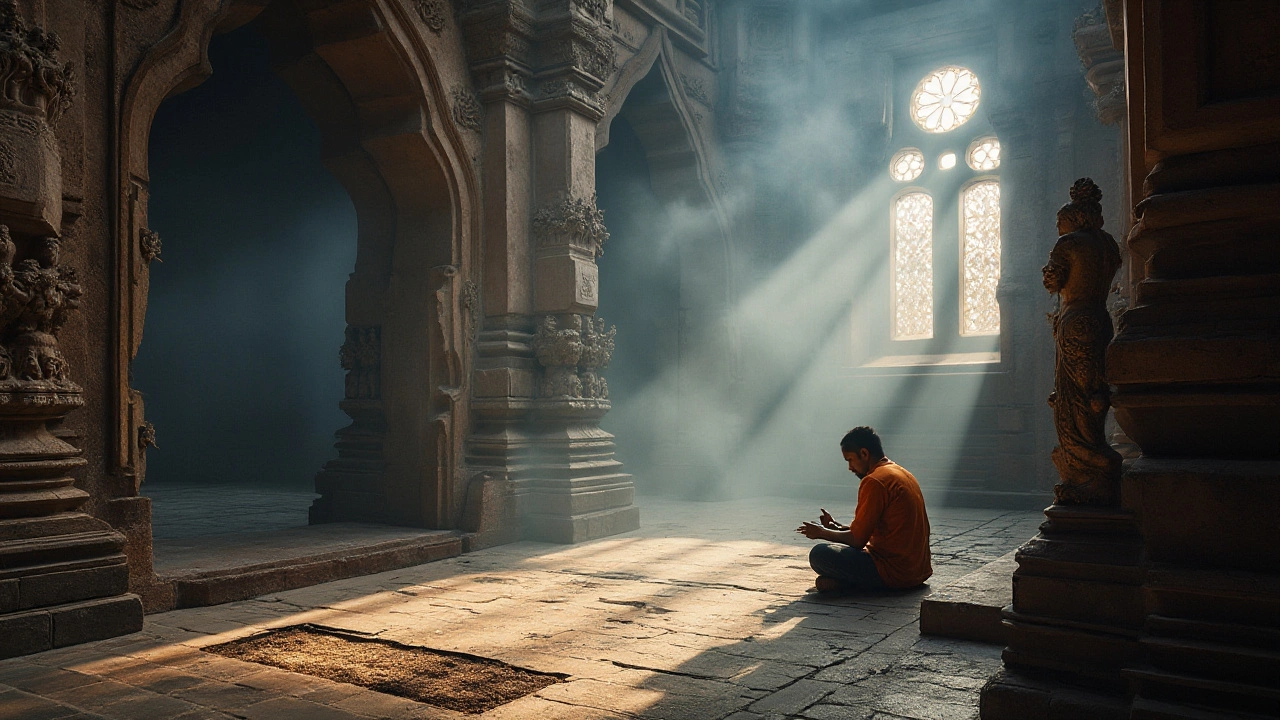
Cultural Significance and Practices
Hindu temples across India are not just places of worship; they embody the rich tapestry of Indian culture and traditions. These sacred sites serve as epicenters for festivals, rituals, and community gatherings. They have been influential in shaping social, cultural, and religious values over thousands of years. The intricate carvings, towering gopurams, and resplendent idol-worship rituals speak volumes about India's artistry and devotion. What captivates most visitors is the seamless fusion of art, religion, and daily life that is evident in each heartfelt prayer and meticulous offering. These temples often act like a time machine, transporting devotees and tourists alike into an enchanting world where ancient traditions still breathe.
An awe-inspiring example would be the rituals performed at the Meenakshi Amman Temple in Tamil Nadu. The temple's daily activities are a majestic orchestration of devotion involving music, dance, and chantings, muscle memory for the faithful. Priests clad in white dhotis chant sacred mantras, while the clanging of bells reverberates in perfect harmony with the vibrant air. The Kashi Vishwanath Temple in Varanasi, on the other hand, offers a unique experience with its Ganga Aarti ceremony. Every evening, visitors witness floating oil lamps lighting up the night—a mesmerizing sight that accentuates the spiritual atmosphere. Here, the sacred city of Varanasi becomes a sanctum where life and death meet, a paradox captured beautifully in every grieving and celebratory hymnal.
The Role of Temples in Community Life
The cultural significance of these Hindu temples extends beyond religious practices and delves into the social fabric of communities. Historically, temples have been centers of learning and the arts. Dance forms like Bharatanatyam and Odissi trace their roots back to temple rituals and performances. In ancient times, temples also functioned as repositories of knowledge, housing vast libraries of manuscripts. Even today, the dynamic role temples play cannot be understated. They are beacons of charity and community welfare, with numerous of them running educational programs, hospitals, and social service organizations. Their existence nurtures a sense of belonging and continuity, illustrating the best tenets of humanity.Cultural Encounters Through Festivals
Festivals celebrated in these temples give an immersive glimpse into the culture. Take the grand procession of the Rath Yatra in Puri or the vibrant Navaratri celebrations at the Meenakshi Temple. These festivals reflect not only devotion but also communal harmony and joy. Ceremonial processions, traditional music, and colorful garments make it an all-engaging experience. In his study on Indian festivals, historian Kamlesh Kapoor stated,"Indian temples epitomize the land’s cultural diversity and unity. Whether through a festival's dance or a ritual's rhythm, they bring to life a culture that is as varied as it is unified, coalescing people from various walks of life."
As tourists or spiritual seekers walk through these hallowed precincts, what leaves an indelible mark is the interplay of silence and sound, tranquility and fervor, ancient traditions and modern aspirations. Visiting these temples is not merely about witnessing religious practices; it's about experiencing life existing at its venerable best. Cultural relevance, historic beauty, and spiritual solace make these structures not only places of worship but living museums of India's variegated and age-old heritage.
